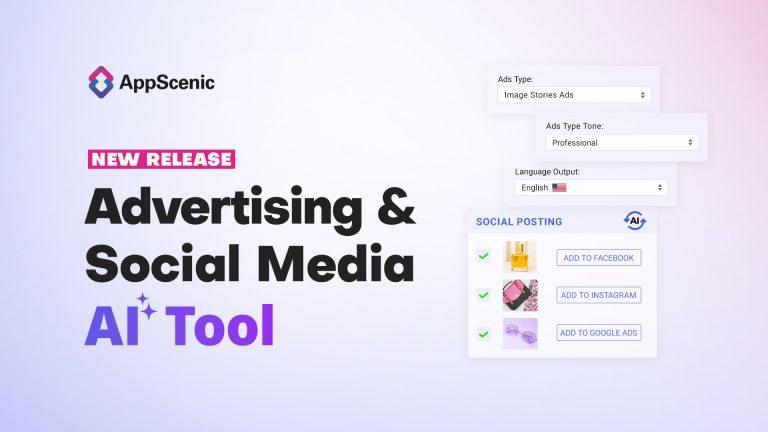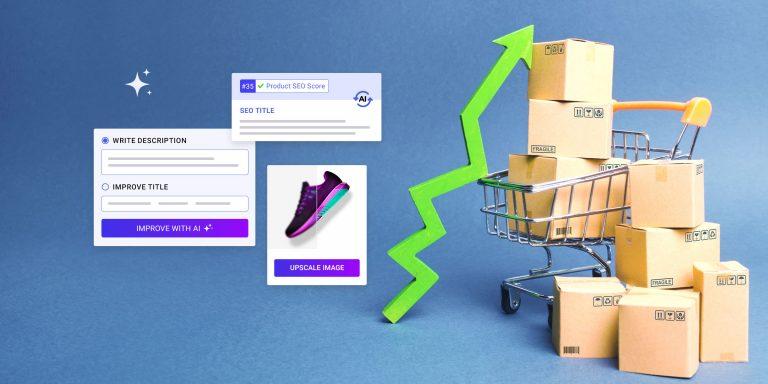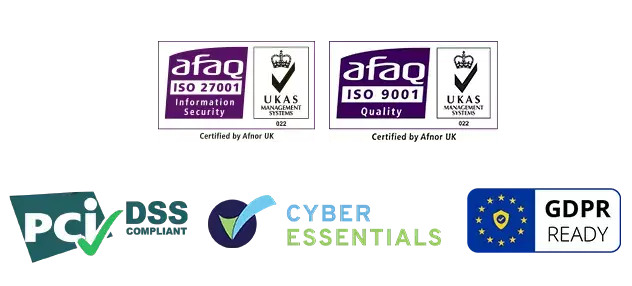As the world of online retail continues to evolve in 2024, these two popular business models have emerged as frontrunners: dropshipping and traditional ecommerce. While both methods offer opportunities for entrepreneurs to succeed in the digital marketplace, there are a few key differences that set them apart.
In this next ultimate comparison, we will delve into the intricacies of dropshipping versus ecommerce, exploring the unique advantages and challenges of each. From supply chain management to customer service, we will take all these one by one and explain how these two models operate and how they cater to the needs of modern consumers.
Whether you are a seasoned ecommerce expert looking to expand your business or a newcomer seeking to break into the online retail space, understanding the nuances of dropshipping versus traditional ecommerce is crucial for your success.
Read on as we navigate through the dynamic landscape of online sales and uncover the key differences between these two popular business models in 2024.

Table of Contents
What is the difference between ecommerce and dropshipping?
In 2024, understanding the distinction between ecommerce and dropshipping is essential for anyone looking to start an online business.
While both models involve buying and selling products online, they operate under fundamentally different frameworks that speak to various entrepreneurial needs and goals.
So, in this next section we will explore the core definitions of each model, highlight their key differences, particularly in how they manage shipping, and dive deep into their respective business models.
Whether you’re planning to launch an ecommerce platform (regular online store) or a dropshipping store, understanding these distinctions will help you decide which model aligns best with your business objectives and how you can optimally manage your online store.
We hope that by the end of this article, you will have a clear understanding of these models so that you can make informed decisions about setting up and running a successful online business.
Definitions of ecommerce and dropshipping
What is ecommerce?
Ecommerce is the practice of buying and selling goods or services using the internet, and the transaction involves money and data to execute all these.
Essentially, an ecommerce store operates like a traditional brick-and-mortar store but in a digital space, where customers can browse, select, and purchase products or services from a website or an online platform.
The seller (also called the retailer) maintains inventory, fulfills orders directly, and has significant control over the quality of products and customer service.
What is dropshipping?
On the other hand, dropshipping is a streamlined form of ecommerce that allows people to sell products without holding any inventory.
When a customer purchases a product from a dropshipping store, the order is forwarded to a third-party supplier or dropshipping supplier, who then ships the product directly to the customer.
This model minimizes the risk and cost associated with inventory management for the store owner, who primarily focuses on the marketing and customer side of the business.
Read more: Dropshipping and Ecommerce Trends for 2024
Key differences and variations in shipping
Shipping logistics reveal some of the fundamental variations between standard ecommerce and dropshipping.
In a standard ecommerce model, the store owner is responsible for inventory management, which includes storing, packing, and shipping products to customers. This control often allows quicker dispatch times and more branded packaging options, enhancing the customer experience.
Now, dropshipping eliminates the need for store owners to handle physical products. The shipping process is entirely managed by the dropshipping supplier, which often leads to longer shipping times depending on the supplier’s location and inventory status.
While this can limit the seller’s control over the shipping speed and packaging quality, it significantly reduces the operational burden that is on an ecommerce entrepreneur.
Understanding the business models
The business models of ecommerce and dropshipping differ mainly in investment and operational strategies. And here’s what we mean by this.
Traditional ecommerce model explained
Starting an online store that follows the standard ecommerce model requires a considerable upfront investment in inventory and warehousing. However, this investment allows for greater profit margins and control over product quality, pricing, and brand reputation.
Dropshipping model explained
The dropshipping business model, by contrast, requires much less initial capital since there is no need to purchase inventory upfront. Entrepreneurs can start an online business with minimal costs, focusing instead on building effective marketing strategies and customer service.
However, this model relies heavily on finding reliable suppliers and can result in lower profit margins due to competition and the supplier’s control over product availability and pricing.
Each model offers distinct advantages and challenges, and the choice between them depends largely on the retailer’s financial capacity, business goals, and level of involvement in the operational aspects of their online business.
Read more: Hidden dropshipping risks and how to avoid them
Pros and cons of dropshipping vs ecommerce
Exploring the advantages and drawbacks of dropshipping versus traditional ecommerce is crucial for deciding which ecommerce business model best suits each seller’s goals.
Both models offer unique benefits and face distinct challenges that can impact the overall success and operation of an online business.
So, in the next section, we’ll explain the key areas such as profit margins, customer experience, fulfillment processes, and other intrinsic benefits of each model, so you can have a clear perspective on what’s the difference between dropshipping and traditional ecommerce.
Profit margin considerations
Dropshipping often features lower startup costs and overhead, which can be attractive to beginners. However, because the dropshipping business model relies on third parties for product fulfillment, profit margins are typically narrower than those in ecommerce.
Ecommerce business owners may incur higher upfront costs but have greater control over pricing and inventory, often leading to higher profit margins.
Customer experience and product quality
In ecommerce, business owners have direct control over the quality of their products and customer service, which can significantly enhance the customer experience. This direct management allows for consistent product quality and quicker customer service responses.
In contrast, dropshipping limits the seller’s control over these aspects as they depend heavily on third-party suppliers. While dropshipping can be a great way to start an online business with less capital, it might compromise the customer experience due to supplier product quality.

Fulfillment process comparison
Ecommerce fulfillment requires a robust system to manage inventory, process orders, and handle shipping, so it often demands significant logistical efforts from sellers.
Standard ecommerce fulfillment is marked by its emphasis on speedy and reliable shipping, which enhances customer satisfaction but requires more from the seller in terms of logistics and overhead.
In other words, dropshipping and ecommerce fulfillment differ mainly in who handles the logistics; in dropshipping, entrepreneurs outsource the logistical challenges, potentially slowing delivery times but without direct handling by the seller.
Other benefits of ecommerce vs dropshipping
Ecommerce offers several advantages, including a broader scope for customization and expansion. Sellers can curate their product offerings and scale up faster due to their control over inventory and supplier relationships.
Meanwhile, dropshipping offers a more accessible entry point into the online market with less financial risk, making it an ideal option for newcomers who might not have the capital to invest in a large inventory.
Both business models provide pathways to success, but the choice depends largely on your investment capability, business strategy, and risk tolerance.
How to start a dropshipping or ecommerce business in 2024?
In 2024, launching a dropshipping store or an ecommerce business remains a fantastic way to step into the entrepreneurial arena. Whether you’re drawn to the sleek simplicity of dropshipping or the robust control of ecommerce, understanding the pathway to start each business type is crucial.
This section will walk you through the initial steps, financial considerations, and key decision points. Here’s how you can kickstart your path into the online market this year!
Key steps to start a dropshipping business
Starting a dropshipping business could be your gateway to the online marketplace, especially if you’re looking for a low-barrier entry point. Here’s how to get things rolling:
- Choose your niche: When selecting your niche, align your passion and interests with market demand. Focus on high-ticket items with substantial profit margins. This approach not only aligns with your passion but also ensures profitability, especially in niches where demand is already proven. Use tools like Google Trends, Google Keyword Planner, SEMRush or AHrefs to identify niches with significant search volumes and high customer intent, optimizing your chances for success.
- Find reliable suppliers: The backbone of a successful dropshipping business is the reliability of its suppliers. Prioritize partners known for their quality products and fast shipping, particularly those that can deliver within 2-5 days. Platforms like AppScenic are a great choice, as they offer access to top domestic suppliers from the USA, UK, EU, and CAN, so you can meet customer expectations and maintain a competitive edge. Find more about our app for Shopify
- Set up your online store: Create an online store that not only looks great but also offers a seamless user experience. Platforms like Shopify, Wix or WooCommerce can help you build an engaging ecommerce website that effectively represents your brand and makes shopping easy and enjoyable for your customers. Ensure your website design is intuitive and your product listings are well-optimized for SEO.
- Market your business: Effective marketing is crucial to draw traffic to your new online store. Focus on advertising channels with high buying intent, such as Google Search and Google Shopping ads, to target potential customers actively searching for your products. While social media can be useful for brand building, prioritize channels that directly contribute to sales, especially when you’re selling high-ticket items and if you are a beginner with a limited budget and no time to waste on months of testing and guessing.
Minimum requirements and challenges of starting an ecommerce business
Launching an ecommerce business is an exciting venture, but it comes with its set of requirements and challenges that you should be ready to tackle. Here’s a friendly rundown of what you’ll need to consider to kickstart your journey in the digital marketplace successfully.
- Initial investment: Jumping into ecommerce usually requires a bit more cash upfront compared to dropshipping. You’ll need to budget for stocking inventory, maybe setting up a warehouse, and other start-up costs. Think of this as investing in the foundation of your brand.
- Build your ecommerce website: Your website is your digital storefront, so make it welcoming and easy to navigate. Platforms like Shopify or WooCommerce make this a breeze and help ensure your site is not just pretty but efficient and secure, too.
- Inventory management: Keep a close eye on your stock levels, nothing disappoints customers like finding out an item is out of stock after they’ve hit ‘buy‘. Setting up a robust system for inventory management will save you from a lot of headaches and unhappy customers.
- Legal and regulatory compliance: Staying on top of legal stuff might not be fun, but it’s absolutely necessary. Make sure you understand the business licenses, data protection policies, and any specific regulations that apply to your products and region. If you plan to sell in the USA, one essential step is forming an LLC in your own state if you are a US citizen, or in Wyoming or Delaware if you are a non-US citizen.
- Payment processing solutions: How you handle transactions can make or break the customer experience. Choose reliable payment gateways that support multiple payment methods to keep things smooth and secure at checkout. We recommend using Stripe, PayPal, Shopify Payments (for Shopify stores), WooPayments (for WooCommerce stores), or even Bank Transfer if your niche requires it or cash-on-deliver (COD) if you plan to sell in a country (mostly EU) where this payment method is popular.
- Marketing and customer acquisition: The real challenge is attracting customers. Utilize a mix of SEO, social media, email marketing, and perhaps some PPC advertising to draw in your audience and convert them into loyal fans. We are big fans of Google Shopping Ads and Google Search, so we recommend spending some time learning how that works as well.
- Customer service: Excellent customer service really sets you apart from the competition. Quick and helpful responses to customer inquiries and problems can turn a one-time buyer into a repeat customer.
- Scalability and growth planning: As your business grows, so should your ability to manage increased orders and customer inquiries. Planning for scalability from the get-go will help you maintain quality and service as you expand.
- Supplier relationships: Develop strong ties with your suppliers. Good relationships can lead to better prices, reliable stock levels, and quicker resolutions when issues pop up.
Starting your own ecommerce store definitely takes a great deal of effort and planning, but getting these elements right from the start will put you on the path to a successful ecommerce venture.
Ready to dive in and make it big in the online world?
What’s the minimum budget to make dropshipping work vs ecommerce?
When budgeting for your online business, the amount you’ll need can vary significantly depending on whether you choose dropshipping or ecommerce.
Here’s more on how much you should plan to invest based on the model you select.
Dropshipping budget
While dropshipping is often viewed as a low-cost entry point into the ecommerce world, to set yourself up for success, it’s recommended to have a budget of at least $1,000 to $3,000 ready.
This budget will cover the costs of setting up your online store, initial marketing campaigns, and the necessary tools and services to streamline your operations for at least 3 to 5 months of activity. Investing this amount can help ensure you have the marketing reach to attract customers and make your business competitive. If you focus on a high-ticket niche, we recommend a budget starting from $2000 and up to $5000.
Read more: The true cost of dropshipping
Ecommerce Budget
For traditional ecommerce, you should anticipate a budget between $5,000 and $10,000 just to get started and this doesn’t include the inventory cost. This budget will help cover the costs of purchasing some inventory samples, securing storage space, setting up your ecommerce website, and conducting comprehensive marketing campaigns.
A larger budget is crucial here as it allows for bulk purchasing, which often reduces the cost per item and prepares you for a broader scale of operations. A good budget to assure you have a stable launch would require at least a $20,000 up to $50,000 initial investment, depending on your items’ niche, product type and price range.
Both business models come with their own set of financial commitments. Dropshipping offers a lower barrier to entry with potentially quicker startup times, while traditional ecommerce demands a higher upfront investment but offers greater control over inventory and potentially higher profit margins.
Careful planning and budgeting are essential to navigating the initial stages of setting up either type of business and paving the way for a successful online venture.
Choosing between dropshipping and ecommerce
Deciding whether to start a dropshipping business or a traditional ecommerce store depends on several key factors. Here’s a simpler guide to help you make the right choice:
1. Startup capital:
- Dropshipping: Ideal if you have limited funds. You’ll need less money upfront, as you don’t buy inventory.
- Ecommerce: Requires a larger investment for buying and storing inventory, but you control product availability and pricing.
2. Control and inventory management:
- Dropshipping: Offers less control over inventory. You rely on suppliers to stock and ship products.
- Ecommerce: Gives you full control over your inventory and supply chain, improving your ability to ensure product quality and delivery times.
3. Risk tolerance:
- Dropshipping: Lower risk since you don’t hold inventory. Suitable for testing different markets with less financial commitment.
- Ecommerce: Higher initial risk due to costs associated with unsold inventory, suited for those confident in their market and product demand.
4. Scaling potential:
- Dropshipping: Easier to start but can be harder to scale due to reliance on third-party suppliers.
- Ecommerce: Better for scaling up, as you can negotiate costs and control stock, aligning with long-term business growth.
5. Involvement and expertise:
- Dropshipping: Requires strong marketing skills to attract customers.
- Ecommerce: Demands a broader skill set, managing everything from inventory to customer service.
Each business model suits different goals, budgets, and levels of expertise. Consider what fits best with your financial situation and long-term ambitions before diving in.
Understanding the fulfillment process in ecommerce and dropshipping
Grasping the fulfillment process in both ecommerce and dropshipping is key to managing customer expectations and ensuring smooth operations. Let’s break down the essentials of each model’s fulfillment requirements and explore how customer service and sales are impacted.
Insights into ecommerce fulfillment requirements
In traditional ecommerce, fulfillment involves everything from storing inventory to packing and shipping orders directly to customers. Here’s what you need to know:
- Inventory management: You must keep a well-organized stock to process orders quickly.
- Shipping logistics: Handling shipping in-house or through third-party logistics (3PL) providers allows for more control over delivery times and costs.
- Technology integration: Utilizing robust ecommerce platforms that integrate inventory, sales, and customer data can streamline the fulfillment process and reduce errors.
Fulfillment in ecommerce is hands-on and demands careful planning but offers greater control over the entire customer experience.
Comparison of customer service and sales issues
Both dropshipping and traditional ecommerce face unique customer service and sales challenges:
- Dropshipping:
-
- Customer service issues: Often arise from shipping delays or issues out of your control since you rely on suppliers to ship products.
- Sales challenges: Maintaining product availability can be tricky as you depend on third-party stock levels, which can affect sales dynamics.
- Traditional Ecommerce:
- Customer service issues: Mainly involve managing returns and exchanges efficiently to maintain customer satisfaction.
- Sales challenges: Requires effective inventory management to avoid out-of-stock situations, which can lead to missed sales opportunities.
Each model demands distinct strategies for handling customer service and managing sales effectively. Understanding these aspects is crucial for optimizing operations and maintaining customer loyalty.

What else makes dropshipping and ecommerce different in 2024?
As we move further into 2024, it’s clear that both dropshipping and ecommerce continue to evolve, influenced by new technologies and changing consumer behaviors.
Understanding the nuanced differences in sales strategies and supplier relationships can help you navigate these waters more effectively.
Let’s explore what sets these two models apart in today’s dynamic market environment.
Exploring the sales strategies in ecommerce
Ecommerce sales strategies in 2024 emphasize personalized customer experiences and the integration of advanced technologies:
- Personalization: Utilizing data analytics to offer personalized shopping experiences, recommend products, and tailor marketing messages to individual preferences.
- Omnichannel selling: Combining various sales channels — online, mobile, and in-store — to provide a seamless customer journey.
- Technology use: Leveraging AI and machine learning for better inventory management, predictive analytics for trend forecasting, and chatbots for enhanced customer service.
These strategies can maximize customer engagement and boost sales in a competitive online marketplace.
Differences in supplier relationships for dropshipping
Supplier relationships in dropshipping are fundamentally different from those in traditional ecommerce, especially in terms of reliance and communication:
- Reliance on suppliers: Dropshipping businesses are heavily reliant on their suppliers not just for product availability but also for fulfillment speed and quality.
- Communication needs: Maintaining open and frequent communication with suppliers is critical to address any potential issues quickly and to stay updated on inventory changes or shipping delays.
- Flexibility and scalability: Successful dropshipping in 2024 requires flexibility in switching suppliers when needed and scaling product offerings based on supplier capabilities and market demands.
Understanding and managing these supplier relationships are key to ensuring that a dropshipping business can respond effectively to customer needs and market changes.
The impact of ecommerce vs dropshipping businesses on the online market
These two ways of doing business not only meet the needs of different sellers and buyers but also have a big impact on how products get bought and sold online.
Let’s explore how each model impacts market dynamics and consumer behavior, so we can see what are their unique benefits and the broader implications for the online shopping landscape.
Market dynamics and consumer behavior: ecommerce vs. dropshipping
In the realm of online sales, both ecommerce and dropshipping shape market dynamics and consumer behavior in unique ways:
- Ecommerce impact:
- Market dynamics: Ecommerce brands often drive market trends by setting standards in product quality and customer service. Their ability to stock and promote new products rapidly can create and fulfill demand in ways that directly influence market behavior.
- Consumer behavior: With comprehensive control over the customer experience, from browsing to post-purchase support, ecommerce businesses can build strong customer loyalty. This model allows for tailored experiences, which encourage repeat business and deeper consumer engagement.
- Dropshipping impact:
- Market dynamics: Dropshipping introduces high flexibility and responsiveness into the market. Retailers can quickly adapt their offerings to meet changing consumer trends without the need for significant inventory investment. This agility enables dropshippers to experiment with market trends without substantial risks.
- Consumer behavior: The variety and novelty of products available through dropshipping can attract a broader audience. However, the variability in order fulfillment and product quality might affect consumer trust and loyalty differently compared to traditional ecommerce setups.
Key benefits of dropshipping and ecommerce for online consumers
Both dropshipping and ecommerce models offer distinct benefits to consumers, enhancing their shopping experience in different ways:
- Dropshipping benefits:
-
- Variety and accessibility: Dropshipping allows a wide array of products to be offered as retailers are not limited by inventory space. This model provides consumers access to a broader range of products, often from global suppliers.
- Cost efficiency: With lower overhead costs, dropshippers can often offer competitive pricing, passing on the cost savings to consumers.
- Ecommerce benefits:
-
- Product consistency and quality assurance: Consumers benefit from better product quality control as ecommerce businesses manage their inventories directly.
- Faster shipping and better support: Ecommerce can provide quicker shipping options and more reliable customer support, enhancing the overall consumer experience.
Conclusion
Deciding between dropshipping and traditional ecommerce shapes not only your initial investment but also your long-term business operations and customer interactions.
Dropshipping offers an accessible entry point with minimal upfront costs. It’s ideal for entrepreneurs who prefer a low-risk start and value flexibility over control. This model allows you to test various markets and products without the commitment of purchasing inventory. However, it does mean relying on third-party suppliers for product quality and delivery times.
Ecommerce, meanwhile, involves a higher initial investment but rewards you with complete control over inventory and the customer experience. This approach suits those looking to build a strong, consistent brand and cultivate deeper customer relationships. It’s well-suited for entrepreneurs ready to invest in long-term growth and scalability.
Your choice should align with your business goals, financial capabilities, and personal preferences:
- Choose dropshipping if you want to start quickly and have lower risks.
- Opt for traditional ecommerce if you want to build a strong brand and have the resources for a significant upfront investment.
In both cases, success depends on strategic planning, understanding your customers, and adapting to market trends. Whichever path you choose, focus on delivering excellent customer experiences and staying adaptable in the ever-evolving online market.
Read next: Dropshipping & Ecommerce Statistics You Need to Know in 2024















